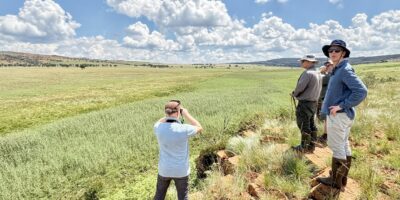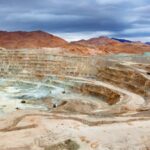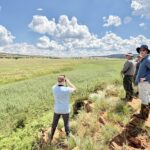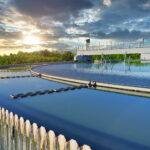Today, discussions about climate change, drought and flash flooding as well as how these phenomena affect agriculture and water rights dominate public discourse. Simultaneously, regulatory agencies worldwide are starting to require sustainable farming practices while economic competition is omnipresent. Intrasectoral competition is taking place on a global scale while water resources are becoming scarcer in specific regions, yet more variable and extreme in others. It is therefore important for agricultural practice to become more resource-efficient. Physical, technical, digital and financial factors accompany this enormous task – one that will ultimately define the stability of the water-energy-food nexus for both today’s society and future generations.
Let’s consider Germany for example. It is not a country usually associated with water scarcity and use conflicts. However, since 2018, confidence in average yearly precipitation amounts capable of securing high-quality harvests has been slowly eroding. As a result, German farmers and agricultural consultants are starting to consider irrigation as a legitimate solution for the sector’s demands, in a region that typically receives approximately 790 mm of rainfall annually. Astonishingly, most farms currently outfitted to irrigate base their decisions on everyday experience. This ‘rule-of-thumb’ method could have the potential effect of causing the sector – which already demands around 70% of the country’s water – to be more inefficient. To combat this challenge, locally calibrated, model-based monitoring and control irrigation systems offer a solution.
Smart farming and the digitisation of agricultural processes
Smart farming is a recent concept that refers to the digitisation of existing agricultural processes via the coupling of sensors, control instruments and machinery with computer models.
In the world of irrigation, Irrigation 4.0 and a Digital Twin are becoming increasingly familiar concepts, which strive to:
- calculate point-based, inhomogeneous, spatial weather and soil data better and in higher resolution
- guarantee real-time monitoring and control of soil moisture
- enable holistic visualisation of all operational processes (pressure, water and/or nutrients)
- predict required amounts of water as well as nutrients for specific timespans
- archive more precise evidence of an operation’s water and nutrient flows for use in authorisation, environmental impact assessments and regulatory bodies
Another important consideration for irrigation management systems is the size and extent of the hydrological model as well as the precision of the sensors. Generally, the more precise real-world processes can be incorporated and measured, the better farmers and irrigation managers can control water amounts and plant stress. Conversely, the model’s precision can directly influence the outcome of the harvest, its quality and the entire balance of the system – particularly in relation to natural, temporal and financial factors.
What can a customisable simulation system do for your farm operations?
A fully integrated hydrological modelling software such as MIKE SHE unifies physical plant characteristics with soil and climate parameters into one physical, hydrological model. This type of numerical model delivers site and plant-specific data summaries of plant transpiration and interception, as well as soil evaporation and groundwater recharge. This results in every hydrologically relevant stage of an irrigation system being considered, from the water source through the control hardware, to the plant, its leaves, roots and the surrounding soil and groundwater – both in the unsaturated and saturated zones.
Depending on what aspects the farmer wishes to consider, a complete soil moisture report can be created. In addition, monitoring and forecast support in the form of a data visualisation dashboard can be set up or real-time model-driven automatisation initiated.
Understand your farm to reach your economic goals
Have you been wondering if you can achieve more with your current operation’s set-up? Do you think, if you were to apply smart irrigation to your fields, you could reach your economic goals? Using digital tools in agriculture should make your decision-making processes more transparent and easier. At the end of the day, you want to maintain a clear overview of your entire system to operate as sustainably and economically as possible.
What are the factors to consider when exploring model-supported irrigation and market options?








